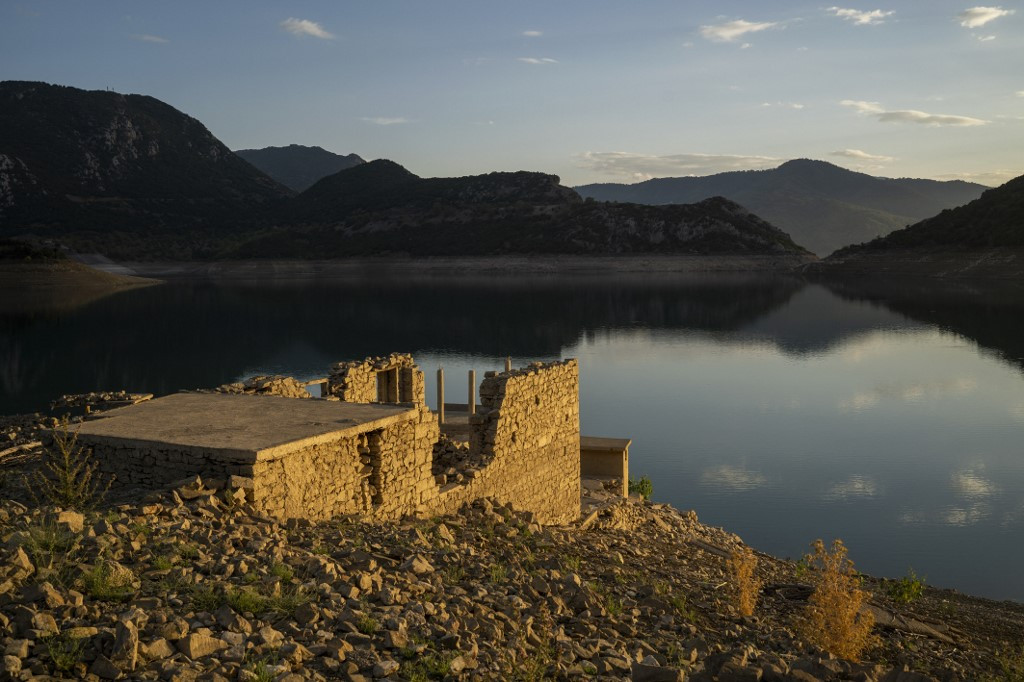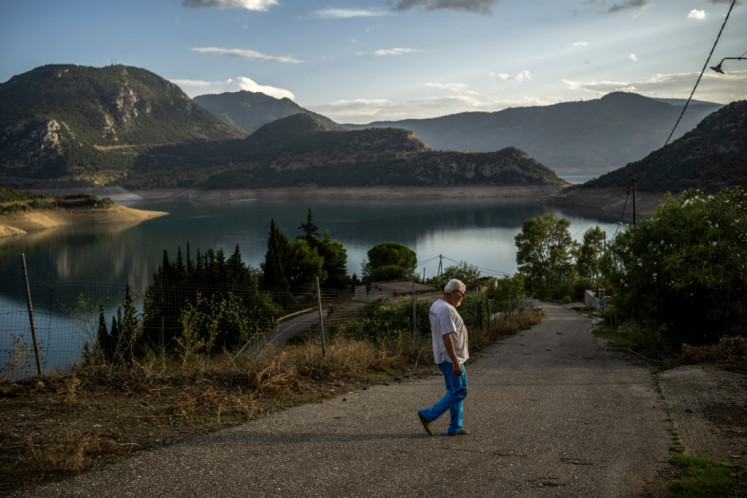Popular Reads
Top Results
Can't find what you're looking for?
View all search resultsPopular Reads
Top Results
Can't find what you're looking for?
View all search resultsSunken village emerges as Greek drought bites
With lake levels down by 30 percent in recent months according to state water operator EYDAP, the ruins of a school and houses have reappeared.
Change text size
Gift Premium Articles
to Anyone
 This photograph shows the remnants of a house that reappeared when the level of the Mornos artificial lake dropped following a drought, near the village of Lidoriki, about 240 kilometers northwest of Athens, on Sept. 1, 2024. Abandoned buildings of the sunken village of Kallio in western Greece have recently re-emerged after the level of the artificial lake of Mornos, Athens' main reservoir, dropped considerably due to a prolonged drought. (AFP/Angelos Tzortzinis)
This photograph shows the remnants of a house that reappeared when the level of the Mornos artificial lake dropped following a drought, near the village of Lidoriki, about 240 kilometers northwest of Athens, on Sept. 1, 2024. Abandoned buildings of the sunken village of Kallio in western Greece have recently re-emerged after the level of the artificial lake of Mornos, Athens' main reservoir, dropped considerably due to a prolonged drought. (AFP/Angelos Tzortzinis)
R
ecord-breaking temperatures and prolonged drought in Greece have exposed a sunken village in Athens' main reservoir for the first time in 30 years.
The village of Kallio was submerged in the late 1970s when the Mornos dam was built 200 kilometers west of the capital, the artificial lake fed by the Mornos and Evinos rivers.
With lake levels down by 30 percent in recent months according to state water operator EYDAP, the ruins of a school and houses have reappeared.
"The level of Lake Mornos has dropped by 40 meters," said Yorgos Iosifidis, a 60-year-old pensioner who had to leave his home as a young man along with the other villagers when the area was flooded.
"You see the first floor that remains of my father-in-law's two-storey house... and next to it you can see what's left of my cousins' house," Iosifidis, who now lives higher up the hill, told AFP.
Drought worsened this year in the Mediterranean country that is well accustomed to summer heat waves.
After the mildest winter on record, Greece had its hottest July on record, according to preliminary weather data from the national observatory. This came after similarly record-breaking temperatures in June.
Nearly 80 houses in Kallio, in addition to the church and school, were "sacrificed" to supply Athens with water, Kallio village chairman Apostolis Gerodimos told state agency ANA.
This is the second time Kallio has reappeared, after another period of drought in the early 1990s, said Iosifidis.
"If it doesn't rain soon, the level will drop further and the problem will be more acute than it was then," he said.
Anastasis Papageorgiou, 26, a doctor who lives in Amygdalia, a village near Mornos, said the area has seen very little rain or snow in the last two years.
"The situation is difficult at the moment, so we have to be careful with water," he said.
The Greek authorities called on the 3.7 million inhabitants of Attica, the region surrounding Athens and home to a third of the Greek population, not to waste water.
EYDAP has also tapped into additional reservoirs near the capital.
On a visit to neighbouring Thessaly on Monday to discuss reconstruction works after last year's destructive floods, Prime Minister Kyriakos Mitsotakis said Greece had to improve its water management.
"We don't have the luxury to waste water... at a time when we know with certainty that we will have less water, we must protect water resources more methodically than we have done so far," Mitsotakis said.
Greece uses 85 percent of its water for irrigation and needs to build more dams, the prime minister said.










